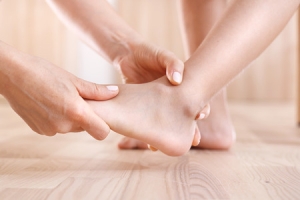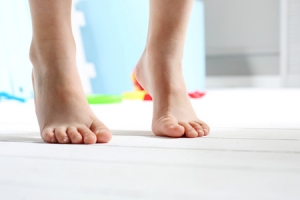Connect With Us
Blogs
Displaying items by tag: Sever's disease
Celebrating Youth Sports Safely
During July, we celebrate National Youth Sports Week. As many of our young patients begin to think about conditioning for fall sports, we at Superior Foot & Ankle Care Center would like to share some information about how to protect your child’s feet and encourage safe sports participation.
Start Early
Participating in a sport has many benefits. It helps your child be physically fit and maintain a healthy weight and hopefully inspires them to develop a healthy lifestyle. While it may seem like the start of the school year is still far away, it takes time to get a body properly conditioned for a sport. If your child has spent the summer glued to their phone and video games, it’s essential that they get off the couch and start some regular physical activity. Check with your child’s coach to see if there are specific conditioning exercises that are recommended.
Put Your Best Foot Forward
Before the start of a new sports season, it’s a good idea to get a checkup with one of our podiatrists, Dr. Victoria M. Foley or Dr. Constance Ornelas. You can call our Long Beach office at (562) 420-9800 to schedule an appointment. The foot doctor can do a complete examination of your child’s feet and ankles and also follow up on any previous sports injuries. If there are chronic conditions such as weak ankles or Sever’s disease, the podiatrist can make recommendations for shoe designs and strategies to help reduce discomfort and risk for injury.
Check the Shoes
The most important piece of equipment for any sport is your shoes. Some tips to consider:
- Buy shoes that are designed for the sport that your child is doing. Different sports require different types of movement for your feet, and today’s sports shoes are designed to accommodate the specific moves associated with a particular sport.
- Get your child’s foot professionally measured. Even if your child has played the sport before, chances are they will have outgrown last season’s shoes.
- Don’t buy big—yes, it’s frustrating how often kids shoes need to be replaced, but a snug fit prevents blisters and feet slipping around which, can result in ankle sprains and other injuries.
If you have additional questions about your child’s feet and sports, don’t hesitate to contact us.
Common Cause of Heel Pain in Children
At Superior Foot & Ankle Care Center we know that tracking down the source of foot pain in children can be challenging. A condition that often affects children between the ages of 8 and 14 is Sever’s Disease, also known as calcaneal apophysitis. Until your child passes through puberty, his or her legs and feet continue to grow and develop. Sometimes the heel bone can grow faster than the tendons and muscles of the leg. This can result in a feeling of tightness and pressure in the heel. The back of the growth plate has a vulnerable spot where new bone growth forms. Continuous stress on the heel caused by running, jumping and wearing cleats can inflame the growth plate. High-risk sports include soccer, football, track, basketball and gymnastics.
Signs and Symptoms
Pain in the bottom of the heel, a loss of flexibility, or a feeling of tiredness in the foot are the primary symptoms of Sever’s Disease. There also may be some swelling in the affected area. Young children, however, may not be able to articulate their symptoms. Look for these signs that heel or other foot pain may be occurring:
- Limping
- Walking on tip toes
- Claiming to be tired and not wanting to play
- Avoiding sports and other physical activities that your child usually enjoys
Getting Relief
Our podiatrists, Dr. Victoria Foley and Dr. Constance Omelas will develop a treatment plan to help relieve pain and inflammation. This will most likely include resting the heel and avoiding sports and activities that aggravate it as well as any of the following:
- Icing the heel
- Anti-inflammatory medications
- Heel cushion inserts or orthotics
- Exercises to stretch and strengthen lower leg muscles and tendons
Sever’s Disease does not have any long-term effects as long as your child takes a break from activities that are putting a strain on the heel and allows the inflammation to go away. It’s important, however, not to ignore signs of foot pain in young athlete’s or encourage them to “play through the pain,” as damaging injuries can then occur.
If you have questions about your child’s foot health, contact our Long Beach office today by calling: (562) 420-9800.
“Mom, My Foot Hurts”
At Superior Foot & Ankle Care Center, our board certified foot and ankle surgeons, Dr. Victoria Foley and Dr. Constance Omelas are experts in pediatric footcare. One of the issues in evaluating children’s feet is that the patients are not able to articulate just what the problem or discomfort is. That’s when podiatrists have to become detectives and help track down the condition affecting the child. Here are some of the more common complaints we hear from our young patients and what they might mean:
“It hurts in the back of my foot.” Heel pain in children can be either an overuse issue or due to developmental factors. Medical conditions such as plantar fasciitis or Achilles tendonitis can affect children just as they do adults if an injury has occurred during a sport or if too much repetitive exercise is straining a particular part of the foot. In cases of children ages 8-15, the growth plate at the back of the heel is still forming and this leaves a vulnerable area that can become inflamed and result in calcaneal apophysitis (also known as Sever’s disease, although it is not actually a “disease”).
“It’s too far to walk.” If children complain that their feet hurt after a long walk or that their feet feel “tired,” it can be a sign of flatfeet. This can be tricky to diagnose because children don’t develop arches until between the ages of four and six. The foot doctor has a number of ways to check for flatfeet and the solution may be as simple as an insert for the shoes that will help shape and train the arch to develop properly.
“Ow! Don’t touch my big toe!” Extreme pain in the side of a toe, especially if the toe looks red and swollen is most likely pointing to an ingrown toenail. If toenails are cut to short or children pick them off and they end up with a curved edge, the nail may start to grow down and into the skin. This causes extreme pain and, if the nail actually punctures the skin, can lead to an infection.
“There’s something on the bottom of my foot.” Plantar warts are hard growths that most often form on the balls of the feet or the heel. Caused by a viral infection that enters the skin through tiny cuts, it is very common in children. They may not hurt initially but can grow and spread. Usually a topical medication or freezing will remove the wart.
As children grow and become more responsible for their own personal hygiene parent see less of their feet. It’s important to periodically examine your child’s feet and to listen seriously to foot complaints. If your child is experiencing any discomfort or pain in the toe, foot or ankle, contact our Long Beach office for an appointment today.



